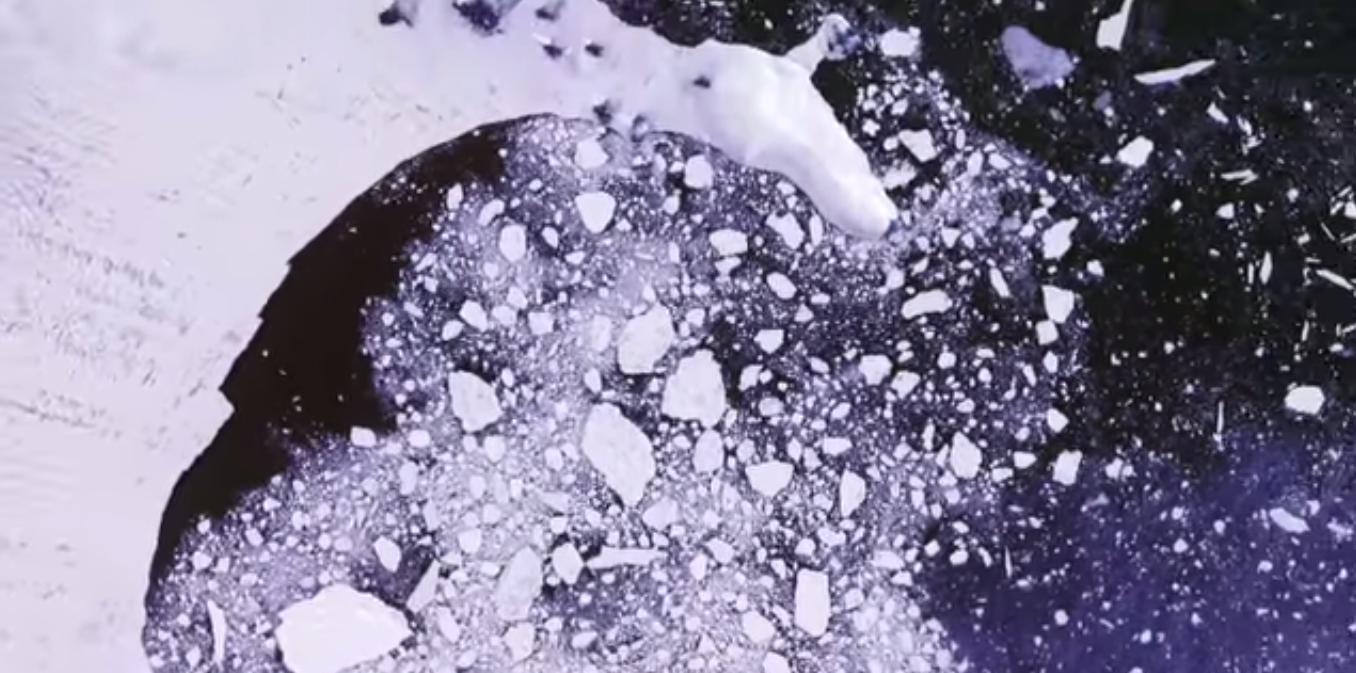
It may feel as though you've read a lot of "important ice is melting" headlines lately. You're right, you have. The important ice, it appears, is indeed melting—and it's doing so faster, in some places, than scientists thought it would. In a new study led by NASA's Jet Propulsion Laboratory, scientists have come to the conclusion that an ice shelf the size of Rhode Island, which has existed for the last 10,000 years, will entirely break apart within the next five.
"What is really surprising about Larsen B is how quickly the changes are taking place," Ala Khazendar, of NASA's JPL, said in a statement. "Change has been relentless."
The Larsen B Ice Shelf is essentially a 625-square-mile gatekeeper on the eastern coast of Antarctica that prevents three glaciers from slipping into the sea. The three (named Leppard, Flask and Starbuck; the latter two are named after characters from the novel Moby Dick) are Larsen B's "tributary glaciers." Break-off ice from these glaciers does not flow into the ocean, but rather integrates into the ice shelf.
But the study's authors have found that the Leppard and Flask glaciers have accelerated their movement eightfold in the years since 2002, when Larsen B partially collapsed in spectacular fashion. NASA notes that that speed-up of the glaciers behind the ice sheet since then is comparable to a car accelerating to 440 mph from 55.
Meanwhile, the scientists predict that a huge rift already widening at the base of the ice shelf will crack all the way across by 2020, causing the entire shelf to splinter into hundreds of icebergs that will float off into the sea. When Larsen B disappears, the tributary glaciers, now without barrier, will essentially gallop away, too.
"Although it's fascinating scientifically to have a front-row seat to watch the ice shelf becoming unstable and breaking up, it's bad news for our planet. This ice shelf has existed for at least 10,000 years, and soon it will be gone," Khazendar said.
Meanwhile, research published last year found that an ice sheet in West Antarctica is hemorrhaging a volume of ice equivalent to Mount Everest every two years. That's 83 gigatons, or 91.5 billion U.S. tons, of ice leaving the Amundsen Sea Embayment per year—a far faster deterioration than scientists previously thought was taking place. In fact, the melt rate of Amundsen's glaciers has tripled in the past 10 years alone.
West Antarctica is often considered the least stable region in Antarctica, and the Jet Propulsion Laboratory has long identified it as the "single largest threat of rapid sea level rise." But no one realized the Amundsen Sea Embayment was losing water quite that fast.
Top climatologists confirmed earlier this year that 2014 was the hottest year on record, based on global average temperatures. But averages are averages, and the while the planet as a whole warms, the poles warm much faster. Antarctica, specifically, is one of the fastest-warming regions on earth; in the last 50 or so years alone, if has warmed 4.4 degrees Fahrenheit, which is three times the global average warming rate.
According to current U.N. projections, by 2100 global sea levels could rise anywhere from less than one foot to around three feet. But, as NASA points out, most of these projections do not include the possibility of significant ice loss in Antarctica.
The Amundsen Sea region alone has enough ice to raise sea level by four feet. Its melting has "passed the point of no return," and has "gone into a state of irreversible retreat," Eric Rignot of NASA's JPL told reporters last year. If the entire West Antarctic Ice Sheet were to disappear, it could raise sea levels roughly 16 feet, according to NASA.
Uncommon Knowledge
Newsweek is committed to challenging conventional wisdom and finding connections in the search for common ground.
Newsweek is committed to challenging conventional wisdom and finding connections in the search for common ground.
About the writer
Zoë is a senior writer at Newsweek. She covers science, the environment, and human health. She has written for a ... Read more
To read how Newsweek uses AI as a newsroom tool, Click here.








